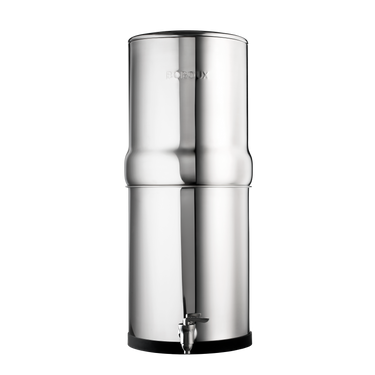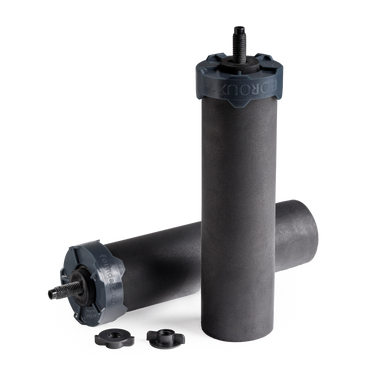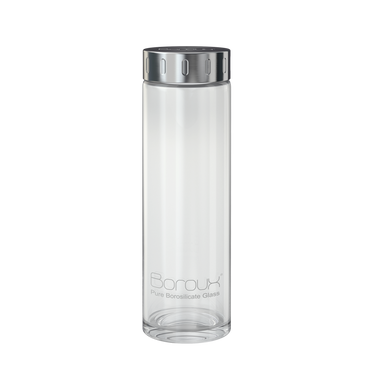
How to Read the BOROUX foundation Filters Test Results Report
We are revolutionizing the testing procedures for the water filter industry. No other water filter product we know of has undergone this detailed and extensive testing. Understanding how the test results are reported helps bring clarity to how the filters actually perform. Thousands of gallons of water are being filtered through these filters in testing so that you know exactly how long the filters last. No extrapolated data. Test results reports will be published regularly. Testing is ongoing so that you always have the most current results.
See Verified Third Party Filtration Performance Test Results
BOROUX foundation filters have been tested by International Association of Plumbers and Mechanical Officials, Research and Testing (IAPMO R&T) Lab NJ, an ISO/IEC 17025 accredited laboratory. The International Standard Organization (ISO) standard 17025:2017 specifies the general requirements for the competence, impartiality, and consistent operation of laboratories, adhering to the specifications defined in the National Sanitation Foundation (NSF) and American National Standards Institute (ANSI) standards, 42, 53, and 401.
NSF/ANSI Standards Overview
NSF/ANSI standard 42: Drinking water treatment units - aesthetic effects. This standard establishes minimum requirements for systems designed to reduce non-health-related contaminants.
NSF/ANSI standard 53: Drinking water treatment units - health effects. This standard establishes minimum requirements for systems designed to reduce specific health-related contaminants.
NSF/ANSI standard 401: Emerging compounds/incidental contaminants. This standard addresses the ability of a water treatment device to remove up to 15 individual contaminants that have been identified in published studies as occurring in drinking water.
Testing Methodology
A test is run by adding a certain amount of a contaminant to a specific volume of water, then letting that mixture flow through the filter, followed by testing the filtered water to measure the remaining amount of that contaminant. A single filter is used for each test, which means that if you use two filters in your system, the results can be doubled. For example, if the report says 4,500 gallons for a set of filters, it will effectively reduce that contaminant for up to 9,000 gallons.
The water tested after filtration must meet or exceed the NSF standards for each contaminant. This is shown in the report under the column titled "Maximum Allowable Effluent Concentration," which indicates the accepted contaminant level after filtration.
Testing continues until the amount of a contaminant after passing through the filter matches or exceeds the allowable limit. When the report states 4,500 gallons, it means 4,500 gallons have actually passed through the filter—no projections or estimations, just actual, factual, verified data.
Detailed Test Information
BOROUX is at the forefront of transforming the water filter industry through our commitment to quality standards and thorough testing methodology. You can expect unparalleled transparency and reliability in the information provided, empowering you to make informed decisions about your water filtration needs.
On the front page of the report, you'll see the version number and date, helping you distinguish between old and current data.
These tests were performed by IAPMO R&T® Laboratory in New Jersey. IAPMO stands for International Association of Plumbing and Mechanical Officials.
On the second page, the testing methodology and chart are displayed. The methodology section explains how the tests were performed.
Understanding the Report
To read the chart, it's best to first understand what each column means:
- Contaminant: Lists the substance that was tested.
- Gallons Tested: Indicates the number of gallons that have successfully completed testing as of the listed date.
- Influent Challenge Concentration Before Filtration: Displays the amount of contaminant in the water before filtration.
- Average Effluent Concentration After Filtration: Shows the average amount of contaminant in the water after filtration.
- Maximum Allowable Effluent Concentration: Displays the maximum amount of contaminant allowed by the relevant standard.
- Testing Status: Indicates whether the test passed the substance reduction requirements of the standard for that particular contaminant.
If you have questions about understanding the test results report, contact us.
Past Reports
- Report version 1.1 November 15, 2023
- Report version 1.3 December 7, 2024
- Report version 1.5 January 25, 2024
- Report version 1.6 February 29, 2024
- Report version 1.7 April 9, 2024
IAMPO Lab Reports
- BOROUX | IAPMO | Chloramine
- BOROUX | IAPMO | Lead 6.5 pH
- BOROUX | IAPMO | Lead 8.5 pH
- BOROUX | IAPMO | Chlorine
- BOROUX | IAPMO | Uranium, Mercury, Gross Beta (Cesium) 6.5 pH
- BOROUX | IAPMO | Mercury 8.5 pH
- BOROUX | IAPMO | PFAS
- BOROUX | IAPMO | Chloroform
- BOROUX | IAPMO | Pharma G1
- BOROUX | IAPMO | Pharma G2
- BOROUX | IAPMO | Pharma G3
- BOROUX | IAPMO | Glyphosate
- BOROUX | IAPMO | Chromium III, Cadmium, Selenium 8.5 pH
- BOROUX | IAPMO | Chromium III, Cadmium, Selenium 6.5 pH
- BOROUX | IAPMO | Chromium VI 6.5 pH
- BOROUX | IAPMO | Chromium VI 8.5 pH










